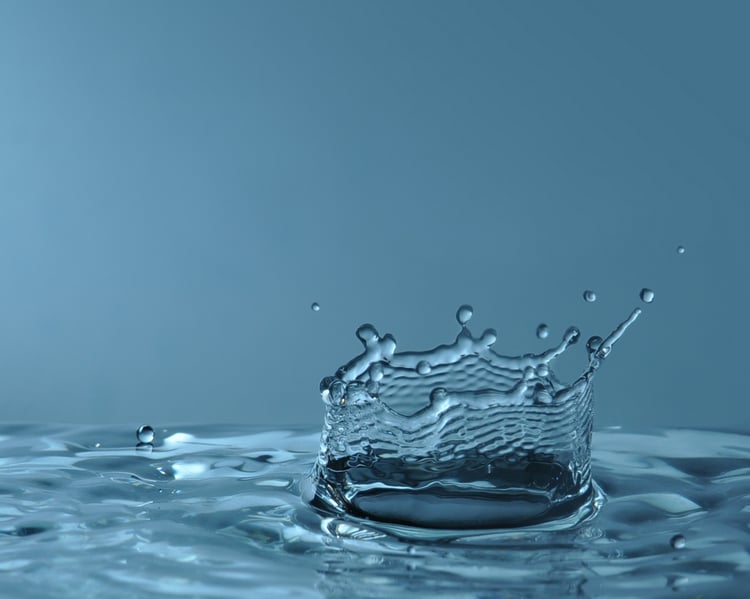
Facility managers are an operation’s first line of defence when it comes to water quality. Over time, you may have noticed that your facility’s water quality has declined. You may have discovered worrying and increasing levels of bacteria in the water. Reverse Osmosis is a very effective means of removing many contaminants from industrial water. But how well does it work to remove bacteria? The following article will provide an overview of the reverse osmosis process, including what it does and does not remove.
Osmosis Vs. Reverse Osmosis
Osmosis is a naturally-occurring process. A container of salt water is placed on the left, and a separate container of fresh water placed on the right, with a semi-permeable membrane between them. Water flows in its natural direction from right to left, and the membrane permits all but the smallest molecules to pass.
The reverse osmosis process can reduce the total dissolved solids and minerals in your facility’s water. From arsenic to magnesium and calcium to zinc, RO’s effectiveness for mineral removal can be anywhere from 60 to 99%.
The reverse osmosis system sees water being forced through a semi-permeable membrane opposite to its natural direction via the use of a pump. Water flows parallel to the membrane to cause a crossflow, which sends contaminated water in one direction and filtered water in another. The flow of water in this manner not only causes turbulence – which brings contaminants to the surface – but it helps to keep the membrane free of potentially-clogging contaminants, reducing the number of times a membrane may need to be cleaned or replaced.
Reverse osmosis is one of the most reliable means of removing contaminants. However, its effectiveness is dependent on the method used to pre-treat water. Pre-treatment will ensure that feed water is as pure as possible before entering the RO system, as well as extend the life of the system and its membranes. Of course, it will become necessary to eventually clean the system. If you want to get the best performance from your reverse osmosis membranes read: Getting The Best Performance From Your Reverse Osmosis Membranes
Contaminant Removal
RO is a unique means of removing contaminants because it can do so at the ion level. This is possible due to the incredibly small pore sizes of semi-permeable membranes. The pores in these membranes are structures. Tunnel-like in appearance, these structures range in diameter from 1 to 10 angstroms, which allows the molecular layer of water to adhere itself to the membrane and prevent ions from passing.
An RO system can have several membranes, each responsible for the removal of a particular contaminant. A carbon filter can be included which will remove contaminants like chlorine, for example. As well, each of the membranes in a system can be gradually smaller in size to remove a larger volume of contaminants as water passes through them.
Removal Of Bacteria
Although the reverse osmosis process does remove some bacteria, it may not remove enough bacteria to meet the water purification requirements of your facility. If this is the case, water sent through your existing system may need to go through other treatment processes like heat sanitisation to ensure that the highest percentage of bacteria is being removed.
If the tests done by your microbiologist have revealed higher than normal levels of bacteria in your existing system, this can also mean that your system has become contaminated due to some or all of the factors mentioned below.
Preventing Bacterial Build-up In RO Systems
Should you be using an RO system now or plan to do so in future, you should know that these systems can also become contaminated if system heat drops to below 20°C, so this should be monitored constantly. As well, the velocity of the water passing through the system needs to be checked on a regular basis to ensure that no stagnant water is present to help bacteria to thrive.
If you do not have some kind of disinfection schedule in place at your facility, now is the time to create one. Regular disinfection will greatly reduce the amount of bacteria in your facility’s water.
Find The Best Bacteria Removal System With Our Free Guide
You can begin your journey to effective bacteria removal by downloading our free eBook, “Guide To Industrial Water Purification Systems”. This detailed resource will help you make an informed decision about your next water treatment system, as well as help you use your current treatment systems to their full potential. You can click here to download your copy.
We always welcome the opportunity to answer your questions about available water filtration and treatment options for your facility; you can contact us via email on sales@wychwood-water.com.










 We are a specialist independent company involved in water purification and water treatment technologies
We are a specialist independent company involved in water purification and water treatment technologies


